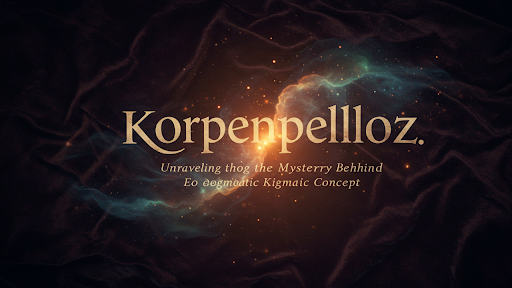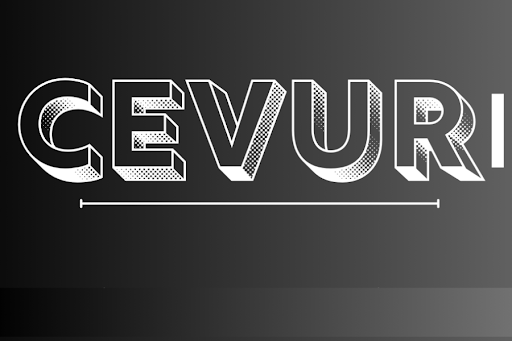Korpenpelloz: Unlocking the Hidden Layers of Cultural and Ecological Significance
In today’s interconnected world, where ancient heritage meets rapid modernization, unique linguistic terms have the power to spark curiosity and foster deeper understanding. One such term is “korpenpelloz.” While not widely known, korpenpelloz holds a multitude of meanings rooted in culture, identity, and even environmental stewardship. In this article, we’ll explore its potential origins, cultural impact, ecological connections, and the importance of preserving such terms in our evolving world.
What is Korpenpelloz? Unveiling Its Essence
The true meaning of korpenpelloz is subject to interpretation, largely influenced by the cultural and linguistic contexts in which it is used. The term may stem from a regional dialect or an ancient cultural reference, reflecting practices, beliefs, or even environmental wisdom. Whether viewed through the lens of folklore or ecological knowledge, korpenpelloz encapsulates layers of meaning that speak to both heritage and modern-day relevance.
Cultural Roots: A Tapestry of Tradition
Origins in Folklore and Mythology
Many cultures around the world have words deeply embedded in oral traditions. If korpenpelloz belongs to a mythological narrative, it could represent a story of creation, transformation, or morality. Such stories often serve as guides for cultural norms, passed down from generation to generation. In some instances, these terms may symbolize values of community unity, bravery, or spiritual enlightenment.
Symbolism and Community Identity
Language plays a crucial role in establishing cultural identity. In small, tightly-knit communities, unique terms like korpenpelloz can foster pride and a sense of belonging. Local terminologies often encapsulate shared experiences and history, shaping social interactions and reinforcing cultural cohesion.
Furthermore, korpenpelloz might symbolize collective resilience or adaptability, traits often celebrated in oral traditions. By understanding its symbolic meaning, we can better appreciate how language preserves the soul of a community.
Regional Variations and Interpretations
Just as different regions infuse distinct flavors into cuisine, linguistic terms often evolve based on local traditions. Korpenpelloz could mean one thing to a mountainous community and something entirely different to a coastal village. This variation highlights the fluid nature of language and its role as a living, breathing entity shaped by its environment.
For instance, in some interpretations, korpenpelloz may be linked to agricultural cycles or festivals celebrating harvests. In other contexts, it may represent a ritual that pays homage to ancestral spirits or nature deities. These regional nuances provide a rich landscape for understanding how a single term can carry multiple layers of significance.
The Ecological Dimension: Korpenpelloz and Sustainability
In many indigenous cultures, language is closely tied to the environment. Could korpenpelloz be one such term that reflects a connection to nature? Exploring its potential ecological significance reveals how traditional knowledge often offers solutions for modern challenges like climate change and biodiversity conservation.
Indigenous Knowledge and Land Stewardship
Traditional ecological knowledge, often transmitted through language, is vital for sustainable land management. Korpenpelloz may symbolize a practice or ritual designed to honor nature’s balance. For example, it could refer to a seasonal practice for preserving soil health, conserving water, or promoting biodiversity in local ecosystems.
Indigenous cultures frequently develop terminologies to describe complex environmental relationships that science may only recently have begun to understand. By preserving such terms, we gain insight into how ancient practices can inspire sustainable solutions today.
Promoting Biodiversity Through Local Language
Terms like korpenpelloz could also aid in conservation efforts. By incorporating local knowledge into modern environmental strategies, communities can foster deeper connections to the land and promote biodiversity. Recognizing the cultural and ecological value of such terms helps bridge traditional practices with scientific advancements.
Modern Relevance in a Digital World
The digital age offers new platforms for celebrating and sharing unique cultural expressions. From podcasts to social media campaigns, terms like korpenpelloz can be revitalized for a global audience. As more people become curious about linguistic heritage, korpenpelloz may evolve into a symbol of cultural pride and environmental awareness.
Digital Preservation and Revitalization
Communities now have the opportunity to document and share their linguistic heritage in unprecedented ways. By creating digital archives or multimedia storytelling projects, korpenpelloz can be preserved for future generations. This not only safeguards language but also ensures that its deeper meanings remain accessible and relevant.
Engaging Younger Generations
One of the challenges of language preservation is ensuring that younger generations remain engaged. Digital platforms can make traditional knowledge more appealing by combining creativity with cultural education. Imagine korpenpelloz featured in virtual reality experiences, interactive games, or artistic expressions—all designed to spark curiosity and cultural pride.
Educational Implications of Korpenpelloz
The intersection of traditional knowledge and modern education offers exciting possibilities. Incorporating terms like korpenpelloz into educational curricula can promote respect for cultural diversity while also offering practical lessons in sustainability and ecological stewardship.
Integrating Traditional Wisdom Into Schools
Educators can develop lesson plans that explore how korpenpelloz reflects traditional ecological knowledge, cultural practices, and social values. These lessons not only enrich students’ understanding of the past but also encourage discussions around contemporary issues like climate action and cultural preservation.
Preserving Korpenpelloz for Future Generations
Language revitalization efforts are gaining momentum worldwide. Korpenpelloz presents a fascinating case study for those interested in preserving endangered languages and promoting cultural diversity. But how can communities ensure that such terms remain relevant in the face of globalization?
Community-Led Initiatives
Workshops, storytelling sessions, and cultural festivals are powerful tools for revitalizing linguistic heritage. By involving elders, storytellers, and cultural leaders, communities can create vibrant spaces for sharing knowledge about korpenpelloz. These events foster intergenerational learning and ensure that traditional wisdom is passed down.
Creative Expressions in Art and Literature
Art has long been a medium for preserving and interpreting cultural narratives. Writers, poets, and visual artists can explore korpenpelloz as a theme, enriching cultural documentation and sparking new interpretations. Literature, in particular, can serve as a bridge between tradition and modernity, weaving korpenpelloz into contemporary narratives that resonate with a global audience.
Embracing Cultural Exchange Through Korpenpelloz
Sharing stories and meanings behind korpenpelloz can also foster cross-cultural dialogue. By celebrating diversity and inclusivity, we can create spaces where different interpretations of this term coexist and flourish. Such exchanges promote empathy, understanding, and mutual respect—essential qualities for navigating our increasingly interconnected world.
Conclusion:
Korpenpelloz is more than just a word—it’s a gateway to cultural narratives, ecological wisdom, and communal identity. As we explore its multifaceted significance, we uncover stories of resilience, creativity, and connection. In a world constantly seeking balance between tradition and progress, korpenpelloz reminds us of the power of language to shape and enrich human experience. By embracing and preserving such linguistic gems, we ensure that our collective heritage continues to inspire and guide future generations.
Don’t forget to check back more on TheVerge!







